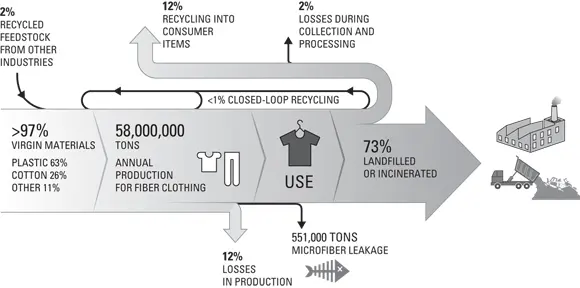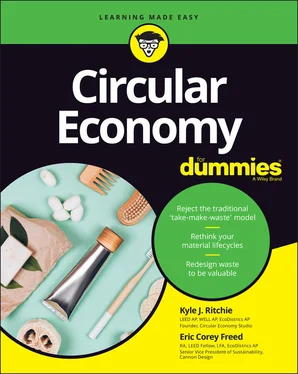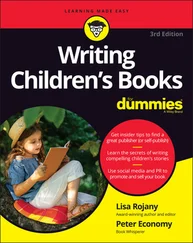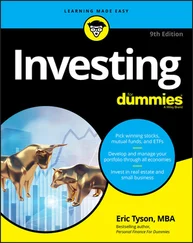1 ...6 7 8 10 11 12 ...25 One major industry that will need a major overhaul is the fashion industry. Poor material usage, fast-fashion, and poor sharing-and-reuse networks act as only a handful of reasons that the fashion industry leads the way in terms of waste and pollution. The fashion industry’s transition from a linear production of clothes to a circular one will require these four major steps:
1 The industry will need to phase out fabrics and materials that aren’t fully recyclable — fabrics and materials that act as a major source of pollution.
2 Manufacturers and businesses will need to redesign how clothing is made and how it’s used. No longer will customers be required to purchase clothing, but opportunities for sharing will emerge under membership programs.
3 Clothing that is made will need to stay in use for longer periods. This translates to using more durable materials and offering sharing and buyback programs so that clothing that’s no longer being used has the potential for continued use.
4 The resources required to support the fashion industry — like cotton and hemp — will need to be regenerated to ensure that the demand for clothing can be met.
A circular economy for all
Whether you’re interested in making a career of the circular economy or in learning how neighborhoods, universities, and the food service industry will look different after they’ve shifted to a circular management of their materials and products, you need to know about the major shifts that are coming our way. This book can help. Whatever the future focus might be, a common thread is already clear: We humans need to eliminate waste, keep materials and products in use, and regenerate the environmental systems on which we are dependent. A circular economy will be part of all those efforts.
Chapter 2
What’s Wrong with Being Linear, Anyway?
IN THIS CHAPTER
 Seeing what the linear economy is and why it’s no longer working
Seeing what the linear economy is and why it’s no longer working
 Recognizing why natural resources (fossil fuels, minerals, food, water) are getting harder and harder to come by
Recognizing why natural resources (fossil fuels, minerals, food, water) are getting harder and harder to come by
 Acknowledging that the impact of the linear economy is now catching up with us
Acknowledging that the impact of the linear economy is now catching up with us
The earth has been around for 4½ billion years. We know that living systems have been around for most of that time (3½ billion years) and will probably be around for a few billion more. We humans, on the other hand, have only been part of these living systems for around 200,000 years — a fraction of that time. Yet even in that small period, humans have managed to disrupt every living system on the planet.
In nature, there is no landfill, no concept of waste. Everything in nature becomes a material flow (a natural resource) for something else — either food, nutrients, or energy. Everything we have is right here on the planet. The only incoming resource we have is sunlight (and maybe the occasional asteroid or two).
All living systems on Earth (except humans) are able to live in harmony with that balance. Species are born, they live, they die, and they feed their nutrients back into the soil safely. The sun provides warmth and energy, and it all just works well, in an elegant, closed loop — a circular approach to resources.
We humans follow quite a different approach, one where we take, make, use, and, eventually, waste — or take-make-waste. We extract natural resources until they’re exhausted; we package products in containers that cannot be reused; and we design products that can’t be repaired so that people are forced to throw them away and buy new ones. We ignore the free energy from the sun and instead burn the last bits of energy in the ground left by the death of the dinosaurs. It doesn’t work — all the linear approach does is slowly convert our human resources into waste.
 Every time we humans follow this linear approach, we’re slowly chipping away at our limited and finite supply of natural resources and leaving toxic waste in its place. We simply can’t keep going like this forever, and the worst consequences of our irresponsible actions haven’t even caught up with us yet.
Every time we humans follow this linear approach, we’re slowly chipping away at our limited and finite supply of natural resources and leaving toxic waste in its place. We simply can’t keep going like this forever, and the worst consequences of our irresponsible actions haven’t even caught up with us yet.
Take, for example, the fashion industry. Each year, millions of tons of raw materials are harvested from the earth. We use massive amounts of fossil fuels to power machines to manufacture those materials into clothing and then to ship them around to stores across the planet, which fills the atmosphere with greenhouse gas emissions. As if that weren’t bad enough, after wearing these clothes, we decide at some point (one year, three years, ten years), to throw them away and three-quarters then end up in a landfill. (See Figure 2-1.)

FIGURE 2-1:The typical approach to making clothing is the linear model.
Because we’ve been doing it this way for so long, we fail to see the opportunities to improve this linear process. Imagine, instead, that we took the approach outlined in Table 2-1.
Seen in this light, the linear approach isn’t that great, is it? A circular-economy approach seeks to take those linear approaches to materials, energy, and reuse and bend them into a more circular approach — an approach that mimics what happens regularly in nature.
TABLE 2-1Prescription for the Future
| Replace This |
With This |
| Extracting natural resources |
Using recycled or bio-based materials |
| Packaging in single-use plastic |
Packaging in reusable packaging or none at all |
| Burning fossil fuels for energy |
Using clean, renewable energy |
| Shipping products around the planet |
Creating local networks of manufacturing |
| Making products that become outdated |
Designing durable products that can be adapted or updated |
| Tossing products into a landfill |
Designing products to be repairable, biodegradable, or recyclable |
In this chapter, we explore how this linear approach isn’t exactly working for the planet and why we humans need to drastically change how we produce our food, products, packaging, and everything else in order to be more circular — like all the other living things in nature.
We’re Taking the Wrong Stuff
The linear take-make-waste approach to work depends on the use of a lot of materials. Companies harvest and extract raw materials and use them to produce a product, which they then sell to consumers. Eventually, the consumer discards the product when it’s no longer of use to them. In 2020, more than 90 billion tons of raw materials were put into the linear system of production. The sheer scale of all this wasteful manufacturing activity is overwhelming.
Unfortunately, humans are harvesting materials that are limited in supply and difficult and expensive to extract — and the materials aren’t designed to be replenished. When those products end up in the landfill, they don’t magically restore the original raw materials. As a result, materials are getting increasingly more difficult (where we can even find a sufficient supply) to extract safely and affordably, harvest a useful supply, and ensure quality.
Читать дальше

 Seeing what the linear economy is and why it’s no longer working
Seeing what the linear economy is and why it’s no longer working Every time we humans follow this linear approach, we’re slowly chipping away at our limited and finite supply of natural resources and leaving toxic waste in its place. We simply can’t keep going like this forever, and the worst consequences of our irresponsible actions haven’t even caught up with us yet.
Every time we humans follow this linear approach, we’re slowly chipping away at our limited and finite supply of natural resources and leaving toxic waste in its place. We simply can’t keep going like this forever, and the worst consequences of our irresponsible actions haven’t even caught up with us yet.











